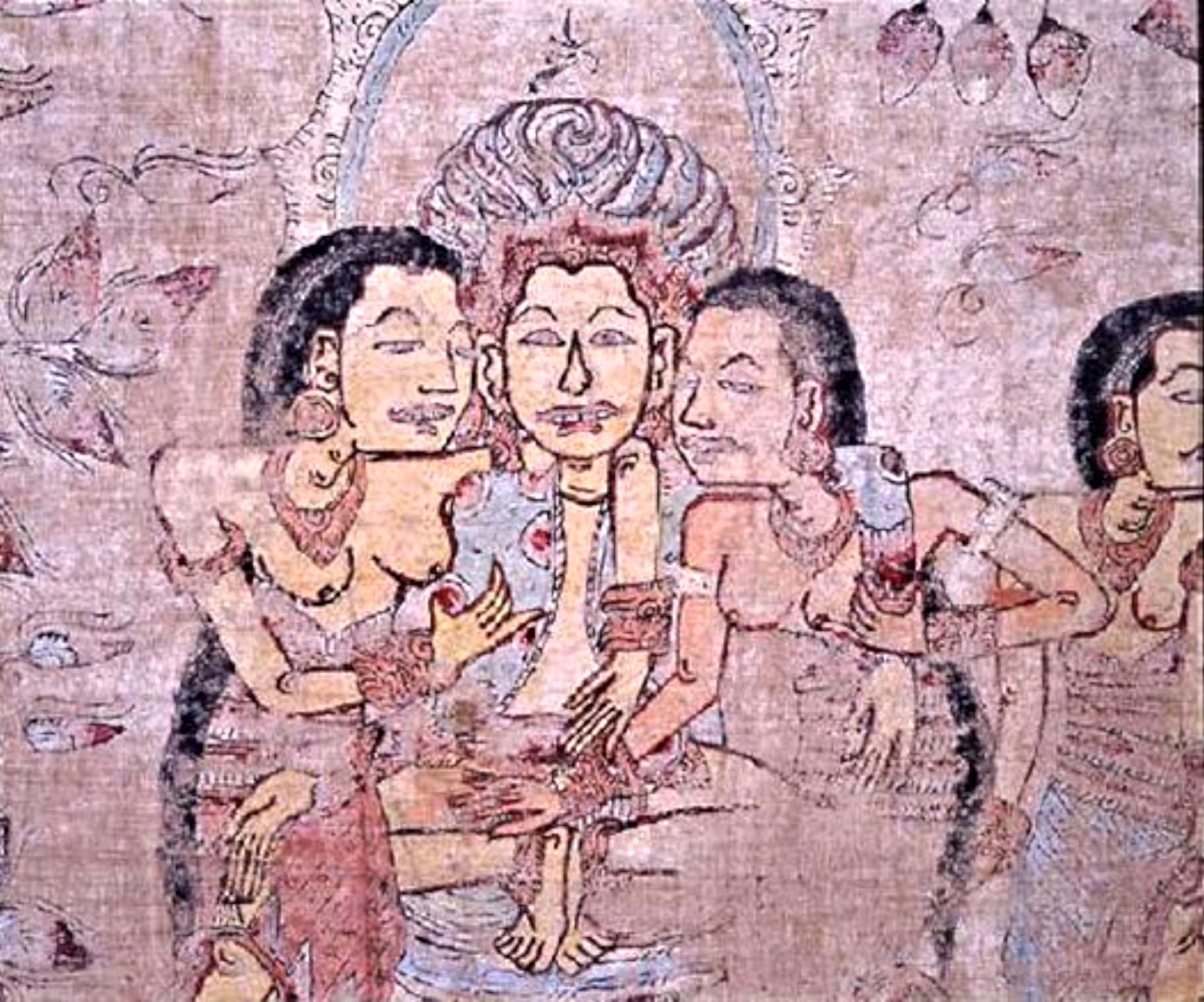
8. Arjunawiwaha (from Chapter 6)
King Airlangga who rebuilt a kingdom in East Java in the early 11th century paid much attention not only to the development of the country and people’s welfair but also to art and culture. While the translation of the Mahabharata into Javanese was said to have been achieved during the time of his father-in-law, Dharmawangsa Tegu, “Arjunawiwaha” (Arjuna’s marriage), reputed as one of the most beautiful pieces of work among numerous kakawin, was authored during Airlangga’s reign in 1035 by Mpu Kanwa, his court poet. The story[1] is very shortly as follows.
“Arjuna was ordered by the gods to defeat Niwatakawaca, the demonic king of titans, who had threatened to destroy the heavenly world. As a ksatria [warrior][2], he discovered the weak point of the demon king, the tip of his tongue, with the help of Nymph Supraba for whom the demon king was passionate, and finally killed the foe, who had advanced to the heaven, in a fierce battle. Arjuna was made the king for the period of seven months (i.e. seven days on the earth) and enjoyed a happy time with Supraba and six other nymphs, until he returned to the earth.”
This story includes such scenes that “Arjuna who had retired in a grotto of Mt. Indrakila was subjected to the temptation of beautiful celestial nymphs who were despatched by gods to test Arjuna’s steadfastness”, that “Arjuna duelled with God Siva who was in a disguise of a hunter, when their arrows shot simultaneously against a boar, which was the incarnation of Giant Murka sent by Niwatakawatja, merged into a single arrow, and both of them claimed the merit”, etc, which are quite amusing to an audience. This poem is said to be a paean to Airlangga in which his life was overlapped with a part of the Mahabharata[3].

Tabing (cloth painting) of Bali depicting a scene of Arjuna Wiwaha in which Arjuna is being tempted by nymphs. A collection from The Australian Museum. Duplicated from: http://artquill.blogspot.com/2015/09/balinese-paintings-tabing-part-iii.html
[1] Claire Holt, Art in Indonesia: Continuities and Change, Cornell University Press, 1967.
[2] The Hindu caste system in Java and Bali consists of four castes, Brahmana (priests), Ksatria (nobles and warriors), Wesia (bureaucrats and soldiers) and Sudra or Jaba (commoners).
[3] Mpu Kanwa concluded the poem as, “Completed is the description of the story of which the name is Arjuna Wiwaha. This is in fact the first time that Mpu Kanwa has composed a poem and made it public. He is, however, in an anxious frame of mind, since he will accompany the King to battle. Venerated be His Majesty Airlangga, who has doubled the size of the kingdom and who approves of this work.” (Claire Holt, Art in Indonesia: Continuities and Change, Cornell University Press, 1967).